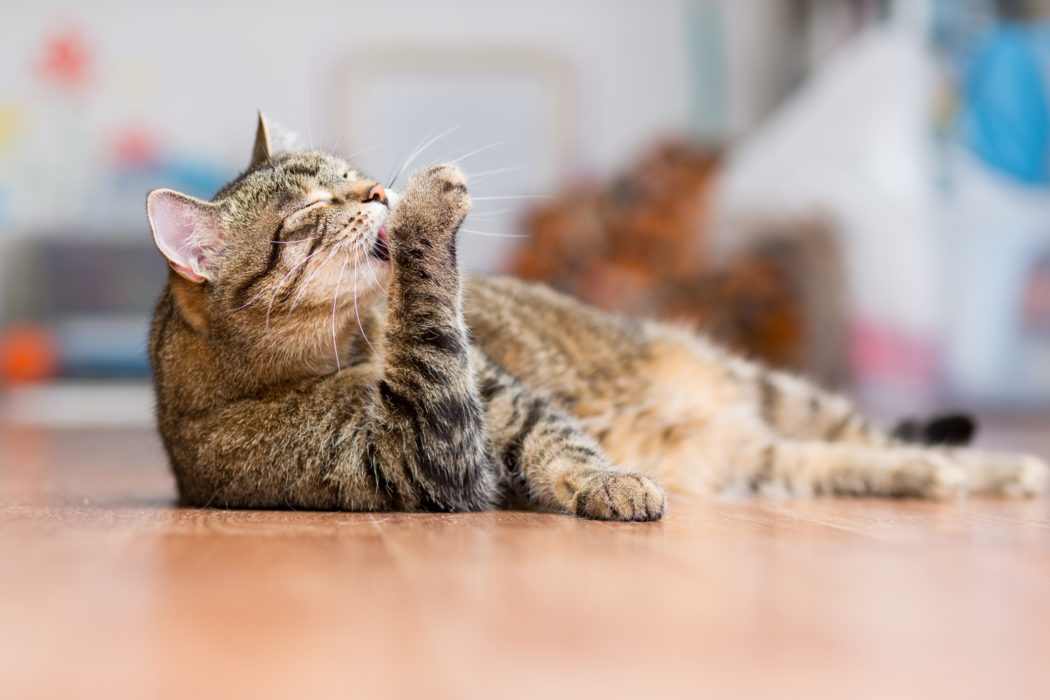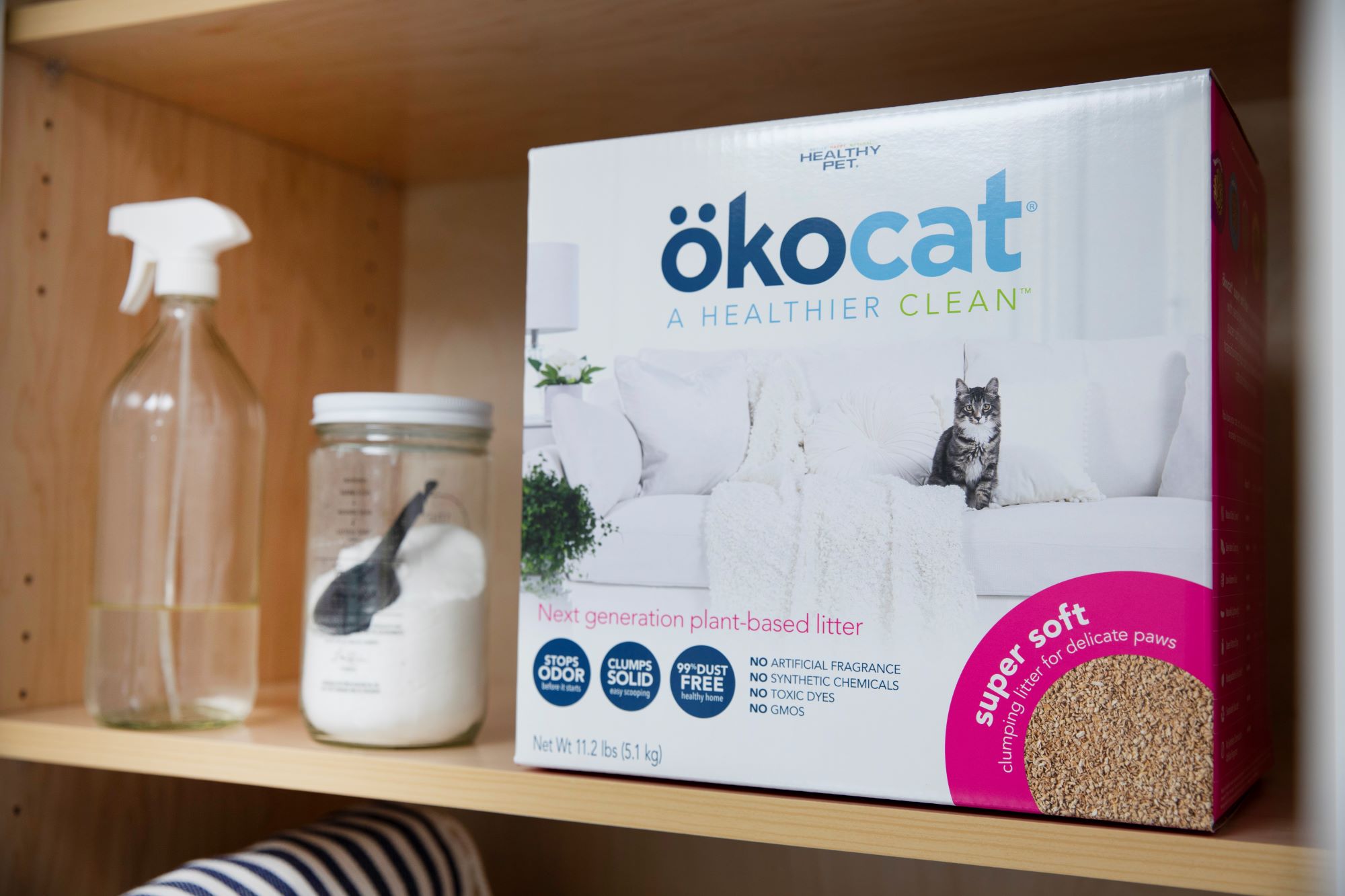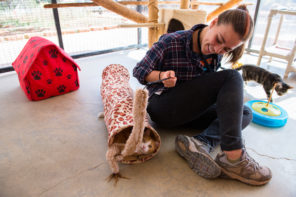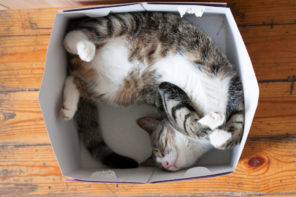When we think of clean living, we tend to focus on ridding our homes of chemicals and making healthy food choices for ourselves and our families. But today, pets are part of our families too. In fact, 95% of U.S. pet owners consider their pets to be family members.
So it’s no surprise that modern cat owners are interested in ways their feline friends can join them in their clean-living efforts.
Read on for five small changes you can make that’ll have a major “pawsitive” impact on your home, your cat and the planet.
1. Use eco-friendly litter.
It’s estimated that the average cat uses 10 pounds of litter per week — that’s more than 500 pounds a year! And all that litter really adds up into, well, litter.
In fact, 2.6 million tons of unsustainably mined clay litter, which isn’t biodegradable, ends up in landfills annually.
This doesn’t only pollute the planet when it’s disposed of, but it also wreaks environmental havoc in its production. Why? Because the clay used in this litter is derived from strip mining.
However, replacing clay-based litter with cat litter made from plant-based materials like paper, wood or wheat lessens the environmental impact because they’re biodegradable.
Litters like ökocat, which is composed of unwanted wood, pulp and paper, take this a step further by diverting more waste from the landfill. Plus, it’s biodegradable (and flushable, where allowed), and it lasts up to seven weeks — much longer than typical litter.
And there’s another significant benefit to embracing cleaning living and opting for an eco-friendly litter: It’s better for your cat’s health.
Dust from clay- and silica-based litters has been linked to respiratory issues in felines — that’s why okocat is 99% dust-free. Plus, cats’ frequent grooming means they could potentially ingest litter, causing other serious health problems.
“This type of clay (litter) can swell up to fifteen times its original volume when a cat urinates or defecates [which] makes it an excellent cat litter substrate, as waste clumps can be scooped out…but when cats ingest this material it can cause gastrointestinal distress,” according to Scientific American.
But it’s easy to avoid such health risks by simply switching to an eco-friendly cat litter.
2. Choose conscientiously sourced food.
We know there’s a lot to consider in how our own food makes it to the table, but the same can be said for kitty noms and kibble.
The sheer number of cat food options available today can be overwhelming and confusing, but there are a few key things to look out for when selecting a food for your feline friend.
First, consider the ingredients. Just like on your own food labels, ingredients are listed in order of quantity, so if the first ingredient on a cat food label is chicken, for example, then you know that the food’s largest ingredient component is chicken protein.
You’ll also want to take a look at how these ingredients are sourced. Food packaging may feature labels like “organic” and “free range,” but don’t always take these at face value. Food-certification labels can be misleading, and pet food companies may meet only minimal welfare standards.
If you’re serious about clean living for both you and your cat, check out the Ethical Shopping Guide’s pet food comparison table.
3. Opt for recyclable packaging.
Product packaging is a major source of waste, especially plastic packaging. In 2017 alone, 14.5 million tons of plastic packaging was generated by the United States, according to the EPA. And only 13% of this waste was recycled.
Look for pet products, including food, treats, litter and toys that are sustainably packaged.
For example, purchase cat food that’s contained in biodegradable or recyclable materials, such as paper bags and aluminum cans.
You can also select cat litter that’s contained in such packaging. ökocat is sustainable from start to finish — the entire package is recyclable with the exception of the handle.
4. Buy sustainable toys — or make your own.
Play is an essential part of life for cats. So access to toys and ample opportunities for enrichment are necessary for kitties who want to live all their nine lives to the fullest. But you don’t have to spend a lot — or create a lot of waste — to find the “purrfect” cat toy.
Most commercial toys made for cats are actually designed to be marketed toward humans. However, cats simply want toys that mimic prey, so you don’t need to spend a lot to find your cat’s new favorite toy.
Consider handmade, sustainable toys, such as those from Dezi & Roo or countless other eco-friendly cat toys.
You can also learn how to make your own cat toys and puzzle feeders, which your kitty will love — and your bank account will, too!
5. Clean green.
The clean-living lifestyle also applies to the products you use to keep your home — and your kitty’s home — in the best ‘pawsible’ condition.
Common household cleaners often contain chemicals like bleach and ammonia that can be dangerous for pets. These can be especially harmful for cats who may accidentally ingest toxins on their fur while grooming themselves.
But you can keep your home and your cat healthy by opting for chemical-free, pet-safe cleaners. And you can even make your own green-cleaning products with ingredients that you already have in your cabinet.
Clean Living is the Cat’s Meow
Cats are all about clean living — just consider how often your kitty bathes on a daily basis!
But all jokes aside, the clean-living movement isn’t for us alone.
As valued family members, our feline friends deserve the very best for their own health and happiness. And luckily, doing what’s right for them is also what’s right for the planet.
Take the first step meow by trying outökocat litter, which is now available at Petco, PetSmart, Chewy and Amazon. And save $3 with this coupon!
[separator type=”thin”]
This article was sponsored by ökocat.






